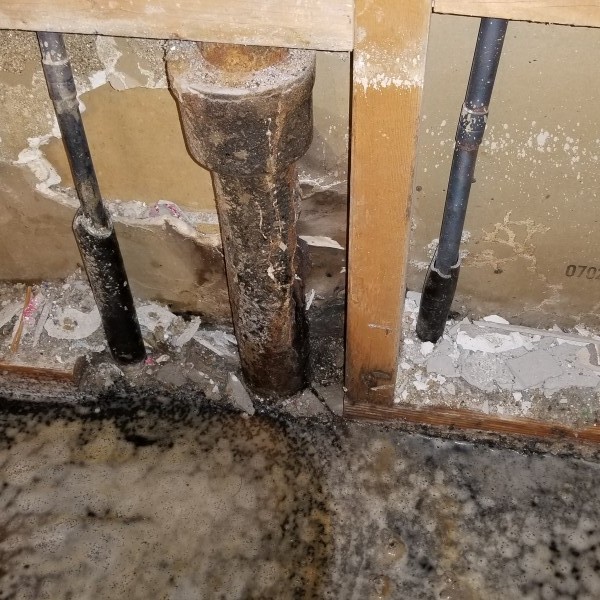Typical Reasons For Water Damage in a Bathroom
BookingThis great article which follows about How to Prevent Bathroom Water Damage is extremely captivating. Check it out for yourself and see what you think about it.

The washroom is very vulnerable for wet buildup as well as potential water damage as a result of the regular use of water in it. This write-up uses easy inspection strategies to aid discovering water damages dangers.
The regular use of water in the washroom makes it incredibly vulnerable for wet build-up and possible water damage. By evaluating it on a regular basis, you can reduce water relevant damages.
The adhering to set of inspections is very easy to perform and also ought to be done as soon as in every three months in order to keep your shower room in good shape and also to prevent possible water damages brought on by the tub, the shower, pipe joints as well as plumbing, sinks, cabinets, and also the toilet
Do not forget carrying out these assessments and be complete while performing them. Remember that these easy examinations can save you a great deal of money by supplying early indicators for water damages
Bathtub and also Shower
The shower and tub call for special focus and upkeep. Examine the ceramic tiles and also replace if broken. See to it that there is no missing cement in between the ceramic tiles. Evaluate and replace fractured caulking at joints where the walls satisfy the flooring or the bath tub. Clogged drains pipes and also pipes issues will certainly prevent the bathtub from drying out and also may suggest severe troubles below the tub. Seek advice from a professional instantly to avoid architectural damage. Take note of stainings or soft locations around the bath tub walls as they may suggest an interior leakage.
Plumbing
Signs for water damages are hard to spot considering that the majority of pipes are installed inside the walls.
Pay special interest to floor covering and also walls moisture as well as spots as they might show an unseen plumbing issue. Inspect wetness degrees in adjacent areas as well.
Sinks and Cabinets
Sinks and cabinets are subjected to wetness as well as moisture day-to-day and also are often forgotten. Evaluate regularly under the sink and also on the kitchen counter over it. Fix any kind of drip in the catch as it might recommend drainpipe troubles. Check out the sink, slow-moving draining pipelines might suggest an obstructed drainpipe. Replace sink seals if they are broken or loose.
The Bathroom
The bathroom is a susceptible water junction. Check the water lines and look for leakages around the commode seat, in the tube, and also under the water storage tank. If you find any type of indications of wetness on the floor around the commode, look for leakages in the toilet rim as well as tank seals.
Be aware that hanging toilet dish antiperspirants boosts the possibilities for blockages.
TIPS TO PREVENT WATER DAMAGE IN THE BATHROOM
The average household uses approximately 80-100 gallons of water per person per day. For a family of 4, that's almost 2,500 gallons of water a week! The largest portion of this consumption comes from bathroom use. Flushing the toilet uses the most water, followed by taking a shower or bath. With that much water running through the home, water damage in the bathroom is bound to happen. Knowing how to spot signs of a water leak is essential to preventing long-term damage. This guide provides you with tips to reduce the impact of water damage on your bathroom.
CAUSES OF BATHROOM WATER DAMAGE
Pipe breaks are the most common cause of water damage we see in our daily jobs. The age of a pipe plays a large role in a pipe break as well as corrosion. Over time, the metal begins to break down, allowing water to escape. Frozen pipe breaks are also a concern in the winter months. Toilet overflows caused by paper products or children flushing inappropriate items. Degraded caulking around the toilet or bathtub can allow water seepage, sometimes behind the fixture, into the subfloor or walls. Condensation forms when the water in a pipe is cooler than the air temperature. Beads of water form on the exterior of the pipes, sometimes so much so that the water begins to drip and pool below. Sink or shower backups created by poor drainage. HOW TO PREVENT WATER DAMAGE IN YOUR BATHROOM
Inspect your toilet supply line for worn or frayed hoses and replace them as needed. Winterize your plumbing to prevent a frozen pipe break. Use vent fans to prevent condensation that can lead to mold growth. Routinely check and replace degraded caulking around your toilet or bathtub. Increase the temperature in your toilet tank and insulate your pipes during the warm summer months to keep condensation from forming. Use child safety locks on the toilets. Flush only toilet paper. "Flushable" wet wipes are actually not good for your plumbing system. Additionally, feminine hygiene products should not be flushed. Prevent water from escaping the tub or shower. Make sure shower curtains are in good condition. Inspect shower doors and replace the seal strip if necessary. Wipe up any water that accumulates on the floor and use bath mats. Water left to sit can cause damage to the tiles and flooring. Refrain from using bath products containing heavy oils to avoid a clogged drain.

I stumbled upon that piece of writing on Preventing Water Damage in the Bathroom while doing research the internet. You should take the opportunity to share this write-up if you appreciated it. We cherish reading our article about How to Repair and Prevent Bathroom Water Damage.
Information